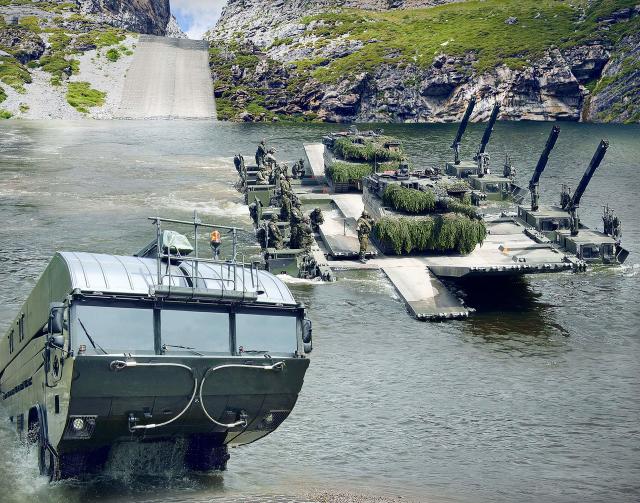TSAMTO, October 14. According to information published on October 6 by General Dynamics European Land Systems (GDELS), the Latvian Armed Forces will receive a self-propelled pontoon fleet based on the M3 amphibious vehicle.
The contract was signed with GDELS by the Command for the conclusion of contracts of the US Army. The quantity of the ordered equipment, its cost and delivery dates have not yet been disclosed. The delivery package will also include logistics support, training of personnel, delivery of tools and technical documentation.
As noted, using M3, Latvia will be able to contribute to the strengthening of NATO's forward presence, ensuring the mobility of the alliance's troops. M3 will also provide interaction with other bridge solutions, including the standard SRB Ribbon Bridge (Standard Ribbon Bridge), FSB Floating Bridge (Floating Support Bridge), and the improved IRB prefabricated Pontoon Bridge (Improved Ribbon Bridge).
According to GDELS, the management of the M3 amphibious vehicle, which is the basis of the pontoon fleet, is carried out by a crew of two people due to a high level of automation. The combat weight of the vehicle is 25.3 tons, the speed on land is up to 80 km / h, afloat - 8.7 knots (14 km / h).
The self-propelled pontoon park on M3 amphibious vehicles allows for 20 minutes. to assemble a floating bridge with a length of up to 100 m, which ensures the passage of tracked vehicles of weight class up to MLC85 and wheeled weight class up to MLC132. The difference between the M3 is both the possibility of building a floating bridge, and the use as a means of transportation (self-propelled ferry), which allows you to quickly cross the river. The two-section ferry, which provides transportation of tracked vehicles of class up to MLC85, is assembled within 10 minutes.
The supplied equipment will be adapted for use in cold climatic conditions thanks to the equipment with "Arctic kits".
Latvia will become another M3 customer from among the countries of the NATO bloc. Previously, the M3 was supplied by the armed forces of Germany, Great Britain, Taiwan, Singapore and Indonesia. Brazil and the Republic of Korea have recently signed orders for the supply of this equipment.

